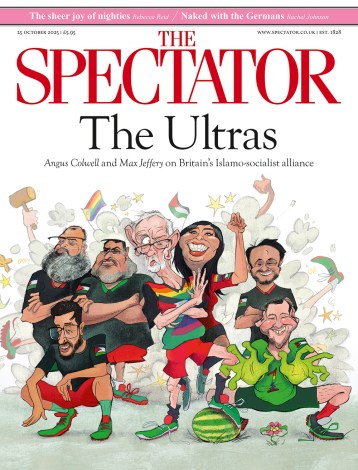You will be forgiven for not having heard of, let alone given much thought to, a raw material called gallium. So, to explain: it’s a by-product of the bauxite-to-aluminium smelting process, it’s used in semiconductors and it is vital for the latest missile defence and radar technologies. Israel’s Iron Dome and the US Patriot Missile system rely on materials such as gallium to guard the skies against Iranian drones and Russian cruise missiles. The only problem is that 98 per cent of the world’s gallium comes from China.
‘Mineral diplomacy’ can now be added to the long list of ‘diplomacies’ governing relations between China and the West. (See ‘vaccine diplomacy’, ‘climate diplomacy’ etc.) China’s monopoly of the mineral market has become very important to Beijing’s foreign policy, and something of a sticking point in US-China relations – the US is trying to ‘de-couple’ its supply chains from China. This week, Indian trade minister Piyush Goyal visited Washington and announced a new deal to partner with America in the production of ‘critical minerals’.
The US plans to turn California’s Salton Sea into a hub of lithium production
The mineral wars, as I’ll call them, began at the end of 2023, when Beijing introduced export restrictions on gallium, germanium and graphite in response to US controls on advanced microchips. It showcased what Geoffrey Pyatt, the US assistant secretary for energy resources, described as China’s ‘willingness to instrumentalise its domination of supply chains’. Beijing’s restrictions, however, could have gone a lot further. Out of the 18 minerals that the UK has identified as ‘critical’ for its future, China is the main producer of 12 of them. China is by far the largest supplier of minerals in the world, and has a controlling share of the mineral processing and refinement sectors (thanks, in part, to generous government subsidies).
How did we all get so bound up in China’s mineral business? In part, it’s just plain bad luck. ‘Critical’ minerals are highly geographically concentrated, and you’re unlikely to find many in Blighty. (Chalk only has so many uses.) China is, as I say, the world’s largest mineral producer, and it’s followed by Australia, Brazil, the DRC, Russia and South Africa. These countries are part of the so-called ‘Global South’, to use a strange but quite useful term, and often have controlling stakes in the world’s most important mineral markets. The DRC alone accounting for 74 per cent of all cobalt production.
China is also lucky because it runs a planned economy, and the West (by-and-large) does not. This has meant that, over a few decades, China has been able to mobilise the commercial will and resources to invest in a few, specific overseas mineral supply chains. Buying up mineral resources has been a staple of the Belt and Road Initiative – China’s massive, globe-stretching infrastructure project – and today 80 per cent of the DRC’s cobalt output is now owned by Chinese companies.
The imbalance within the global mineral market is not just bad for diplomacy, it’s bad for consumers. Disasters like Covid and tragedies like Russia’s illegal invasion of Ukraine have led to serious swings in mineral pricing. The price of zinc was 16 per cent lower in April 2020 than it was in January 2020. Nickel rose 36 per cent in the immediate aftermath of the war in Ukraine. These price swings could have been contained if we didn’t rely so heavily on only a select few markets for our minerals.
Countries with extractable minerals – China’s competitors, other countries in the ‘Global South’ – are going to benefit greatly over the next few years from America and the rest of the world’s ‘decoupling’ processes. Australia has one of the largest reserves of lithium in the world, as well as large recoverable resources of cobalt, manganese, and some rare earth elements such as thulium and samarium. With demand for critical minerals forecast to grow by up to six times by 2040, Australia is likely to become an increasingly important ‘mineral ally’ to America in the coming years.
At the same time as America and the West is cutting off China, it is also racing to discover new mineral deposits. The US plans to turn California’s Salton Sea into a hub of lithium production, and Norway has given the go-ahead for deep sea mineral mining in the Arctic which could unlock $70 billion worth of critical minerals.
But these projects take time, and China has a head start. Every country needs ‘critical minerals’ for their green energies, defence infrastructure and everyday technologies. Until the West can take advantage of untapped mineral deposits and diversify away from China, Beijing’s grip on the market is likely to remain firm. Have we got the minerals?








Comments